“All sins have their origin in a sense of inferiority otherwise called ambition.” -Cesare Pavese
We're halfway through the year at Starts With A Bang, but it feels like the greatest things are just getting started! For one, enjoy our newest podcast: on Interstellar Travel, highlighted by an interview with Larry Niven last month at Balticon 50!
- Does Earth really have a second Moon? (for Ask Ethan),
- NASA's New Horizons views first distant Kuiper belt object beyond Pluto (for Mostly Mute Monday),
- Could no new particles at the LHC be exactly what physics needs? (a fantastic opinion by Sabine Hossenfelder),
- How does helium get underground in the first place?,
- Little world have bigger features, and
- The physics of fireworks, what everyone wants to know in advance of 4th of July!
Even though I'm away at a concert in Bend, OR (Widespread Panic!) this holiday weekend, that doesn't mean we can't share a few moments together on our Comments of the week! Let's get to it!
From Denier on new records: "It was a crazy week but I wanted to offer belated congratulations on the ‘humanity may be alone in the universe’ piece. It made the front page of RealClearPolitics. You had to be close to 100,000 page views in 24 hours. I’m not sure what your record is that that was solid."
It's always fun to do better than you've done before, and to reach a large number of people with something you feel is important. Since I moved to Forbes last year, the Humanity May Be Alone In The Universe piece was my third most successful ever, with some 126,000 views. The others that have beaten it was my preview piece on What Will It Mean If LIGO Detects Gravitational Waves? (~158,000 views), and my response to an awful WSJ op-ed, where I wrote No, Science Is Not Faith-Based (just over 200,000 views).
So the moral of the story is that bad science op-eds in the WSJ and NYT provide me with an excellent opportunity to succeed. Send those to me for Ask Ethan, people!
The Standard Model particles and their supersymmetric counterparts. Exactly 50% of these particles have been discovered, and 50% have never showed a trace that they exist. Image credit: Claire David, of http://davidc.web.cern.ch/davidc/index.php?id=research.
From Wow on a religiosity argument: "If a proposition fails 10,000 times, we really shouldn’t have to work on the 10,001th without someone else having done enough work themselves."
This is true... and arguably applies to ideas like Supersymmetry and Grand Unification. I'm thinking about writing an anti-GUT piece for next week, if you'd be interested.
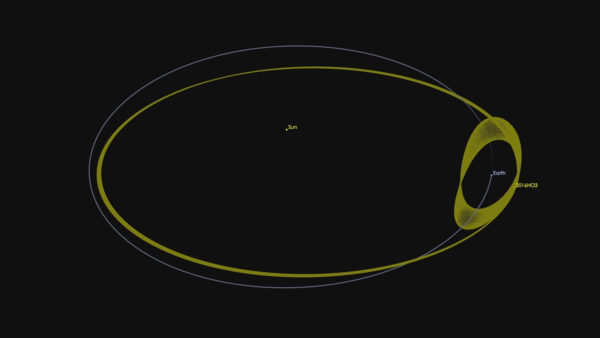 Asteroid 2016 HO3 has an orbit around the sun that keeps it as a constant companion of Earth. Image credit: NASA/JPL-Caltech.
Asteroid 2016 HO3 has an orbit around the sun that keeps it as a constant companion of Earth. Image credit: NASA/JPL-Caltech.
From Carl on Earth's planetary status, given its captured asteroids: "Apparently Earth hasn’t cleared its orbit. We are living on a dwarf planet, I suppose."
Let's examine whether that's true; what does it mean to "clear your orbit" when it comes to planetary status? Clearing the orbit doesn't mean there aren't comets, asteroids, moons, or other temporary or even quasi-permanent small objects present in your orbit's vicinity around the Sun. Clearing your orbit means that you are gravitationally dominant, and that there are no other bodies of comparable size other than its satellites or those otherwise under its gravitational influence. If this asteroid were of comparable size/mass to Earth, then Earth would not be a planet. Perhaps ironically, the origin of this phrase likely dates to a 2000 presentation to the IAU on planetary status, where the similar phrase "clear its neighboring region" was used by Alan Stern and Harold Levison. The Plutonian Stern/Brown rivalry continues.
The Hubble Space Telescope, as imaged during the last and final servicing mission. Image credit: NASA.
From Ragtag Media on a new Hubble: "Are there any plans for a new [H]ubble with our current up to date technology?"
What don't you like about the old Hubble? It's still the best optical telescope in human history for a great many purposes, and it was upgraded most recently less than 10 years ago. It's just had its mission lifetime extended to 2021, where it will spend years overlapping with JWST. There are a large number of people who want to use the "other" WFIRST telescope that was a gift from the Department of Defense to make a "Hubble clone," although I haven't heard much support for that proposal recently.
From Narad on naturalness: "Anyway, one interested in naturalness [...] might also want to see this Woit entry."
One of the big questions, when we talk about physics in general, is why particles have the mass that they do? If you take the fundamental constants of the Universe -- things like ℏ, c, and G -- and try to construct a mass out of it, you get the Planck mass: somewhere around 10^19 GeV/c^2. Yet the masses we have are somewhere on the order of ~1 GeV for the fundamental particles. People argue that there must be some natural reason for this, like a new symmetry (e.g., supersymmetry) that protects these masses to some 19 orders of magnitude.
But that's just one idea, and it's not necessarily right. Nature may arrive at rest mass values through a process completely unrelated to the Planck mass. Naturalness may be a garbage idea. Think about it.
From Sue on my assertion about finding half the supersymmetric particles: "Erm, it seems to me that rather fewer than 50% of the particles in the particles/sparticles figure have been discovered, given that it shows 5 Higgs bosons (unless I am more out of the loop than I thought)."
If I cheat and show you the above figure, it's 50%. But you're right: if SUSY is correct, there are also four additional (at least) Higgs bosons, and then the higgsinos atop them. There's also the graviton (which we don't know how to find) and the gravitino (which we might be able to find). So if SUSY is right, there are extra Standard Model particles and then an equal number of sparticles. So you are correct, we are at less than 50%!
Inside the magnet upgrades on the LHC, that have it running at nearly double the energies of the first (2010-2013) run. Image credit: Richard Juilliart/AFP/Getty Images.
From Denier on my thoughts: "I’d like to know what @Ethan thinks of this idea. Sabine has basically said that she hopes we don’t find any particles beyond the standard model. It is the “nightmare scenario” and it is the scenario Sabine most hopes for."
So I find Sabine's assertions and hopes interesting, and I'm glad she shared them. For me, my preference would be that the LHC finds something new. Something would provide a better clue to theorists than nothing would, and would both enhance our knowledge more and give us a new direction to work in. I am less optimistic than Sabine that finding no new particles would change the way theorists theorize. If they've been comfortable moving the SUSY/GUT-ty/String-y goalposts this far, what makes you think they won't move them farther if the LHC comes up empty?
A helium extraction facility in Amarillo, TX. Image credit: Jennifer Tutop, BLM New Mexico Intern, under a c.c.-by-2.0 license.
From Julian on helium: "Interesting that we’re running out of helium. If we were able to create practical fusion reactors, not only would we solve a lot of energy and greenhouse gas problems, we’d get abundant helium as a byproduct."
And to be fair, it's not like "oh no if we extract it all we'll never have helium again," it's that we'll have to mine it from the atmosphere. Which we can do; it's just way more expensive and difficult. But we can do it, technically. But this may be a good lesson for humanity on what not to do with our resources; it might not be a good idea to spend spend SPEND until we don't have enough for our needs.
 Helium balloons, where the vast majority of the helium inside will escape the Earth. Image credit: public domain photo from Pixabay user HilkeFromm.
Helium balloons, where the vast majority of the helium inside will escape the Earth. Image credit: public domain photo from Pixabay user HilkeFromm.
Those of you with strong laissez-faire inclinations, before you leap to the defense of this practice -- and I hate to get political but I'm pre-empting you here -- may want to consider how you'd react to this argument if I replaced "humanity" with "poor people" and "resources" with "money." Fourth of July is coming, and even people with very different lives and beliefs from you are part of our country, and those of you from around the world add even more diversity to the circumstances we all see in our day-to-day lives.
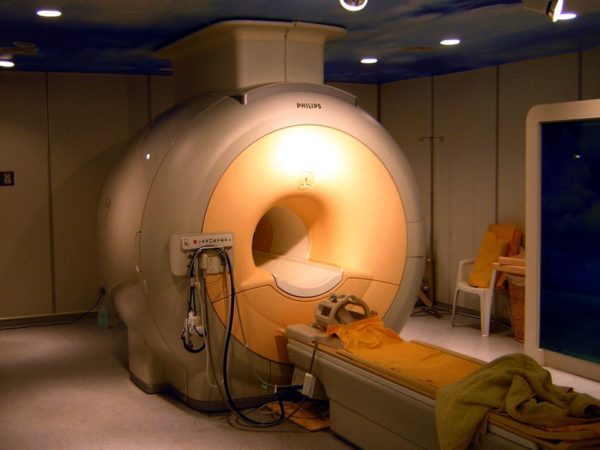 A modern high field clinical MRI scanner. MRI machines are the largest medical or scientific use of helium today. Image credit: Wikimedia Commons user KasugaHuang, under a c.c.a.-s.a.-3.0 license.
A modern high field clinical MRI scanner. MRI machines are the largest medical or scientific use of helium today. Image credit: Wikimedia Commons user KasugaHuang, under a c.c.a.-s.a.-3.0 license.
From Robert Scott on the need for liquid helium: "Thank you Ethan for this informative article. I’m afraid most people are entirely unaware of the critical role that helium plays in medicine and science, and its scarcity. Just yesterday I needed to get an MRI as a result of a concussion (no, I’m not making this up just to make a point. Wish I were!). If we dissipate this resource frivolously such invaluable tools will probably disappear."
The reason we need helium is for cooling, plain and simple. Put some helium in a strong metal cylinder or drum and pump on it, and you can cool it down into its liquid state, at 4 K. Pump it further and you can get it down to the millikelvin range. At these low temperatures, you can cause electromagnets to superconduct, and achieve these high magnetic fields you need for all sorts of purposes. Anywhere that has a magnetic field of more than about 2 T (MRI machines are typically 3-4 T, and modern particle accelerators are anywhere from 4-50 T) requires superconducting electromagnets, and that means liquid helium. So enough with the blimps and the birthday balloons, and learn to do the funny voices without helium!
The Grand Canyon, as viewed from Pima Point, with the Colorado River running through it. Image credit: Wikimedia Commons user Chensiyuan, under a c.c.a.-s.a.-4.0 international license.
From Omega Centauri on geological forces: "You forget another important difference, the strength of erosion. On Earth, whether by air water or ice, its generally pretty strong, reducing mountains over a timespan of a few tens to a hundred million years, and much faster for soft targets like volcanoes. Essentially almost all of Earths geo-morphology is heavily perhaps dominantly shaped by erosion."
This is absolutely true. I grew up on the United States' east coast, and the mountains I grew up with were the Appalachians, the Adirondacks and the Catskills. These aren't the tallest mountains on Earth; their top-to-bottom elevation is barely 6,000 feet, or just over a mile (and just under 2 km). But hundreds of millions of years ago, they were taller than the Himalayas are now, and may have outstripped many of the mountains on Mars that are currently taller than Mauna Kea! Over geologic timescales, erosion is a force to be reckoned with, too.
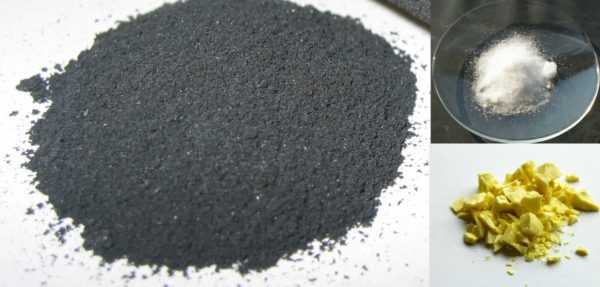 The three main ingredients in black powder (gunpowder) are charcoal (activated carbon), sulfur and potassium nitrate. Image credit: Wikimedia Commons user Ravedave under c.c.-by-2.5 (for the carbon); public domain photos for the sulfur and potassium nitrate.
The three main ingredients in black powder (gunpowder) are charcoal (activated carbon), sulfur and potassium nitrate. Image credit: Wikimedia Commons user Ravedave under c.c.-by-2.5 (for the carbon); public domain photos for the sulfur and potassium nitrate.
From Denier on charcoal briquettes containing no charcoal: "I’m calling BS on this. I know that may be true for briquettes used in other industries, but charcoal briquettes you use on your grill DO NOT often contain no charcoal. They often contain other ingredients in addition to charcoal, such as cornstarch, coal, limestone and borax, but not to the exclusion of charcoal."
I am busted! Which is to say, I knew that charcoal briquettes weren't the same as activated carbon, but I didn't do my in-depth research to find out that they were partially made (or even mostly made) of charcoal. Which they are! It isn't suitable for use in gunpowder, but that fact does not make my untrue assertion true. My BS has been successfully called.
There are lots of great fireworks and history stories floating around the comments section for your enjoyment, but I'd like to remind everyone that fireworks and firecrackers and "boom" sounds often are the most terrifying to animals: dogs in particular. Please do everyone a courtesy and set off your fireworks on just this one night and to do it over a relatively short period of time. A great display for an hour or two should be more than enough, once a year, for your enjoyment, and also for the peace of all your neighbors and their fuzzy friends.
Be happy, be well, be safe and have fun!

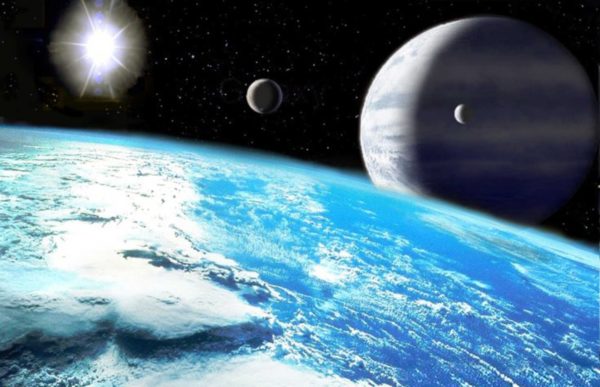
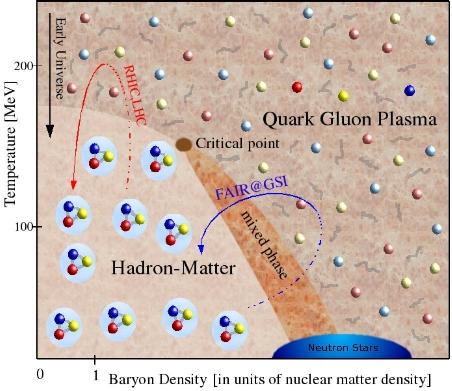
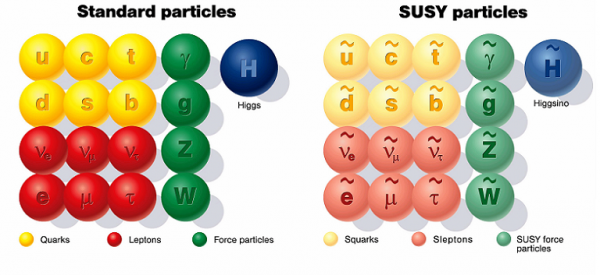

Needs more Gorn.
"I’d like to remind everyone that fireworks and firecrackers and “boom” sounds often are the most terrifying to animals: dogs in particular."
True. I'll also say that fireworks can be incredibly stressful for a military veterans dealing with PTSD.
“Nature may arrive at rest mass values through a process completely unrelated to the Planck mass.”
If that’s so, then rest mass values were not always what they are now, but instead “arrived at” current values via a “process” over time.
Do I have that right?
@Ragtag Media
The closest thing to plans for a new Hubble is the Advanced Technology Large-Aperture Space Telescope (ATLAST). Like Hubble, the telescope is supposed to be serviceable and can image in the visible spectrum.
http://www.nasa.gov/content/goddard/nasa-team-lays-plans-to-observe-new…
Just take the proposal with a grain of salt as plans of space telescopes change all the time (as was made painfully clear to me the other day when I embarrassed myself by ranting over 4 year old WFIRST plans).
No. HTH. HAND.
"This is true… and arguably applies to ideas like Supersymmetry and Grand Unification"
Yup.
And it does.
Those proposing it are doing the work. Unlike, for example, the IDers.
"
This is absolutely true."
Uhrm, not really. Our land geomorphology is. But the oceanic volcanoes in the pacific (as one example) contain the tallest and steepest mountains in the world, being either entirely or mostly under deep water where there's little erosion.
We just don't get to see much of it.
"If that’s so, then rest mass values were not always what they are now,"
Why?